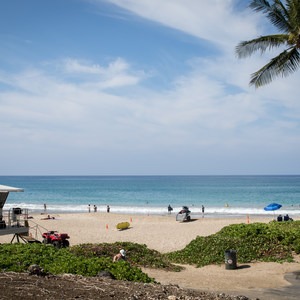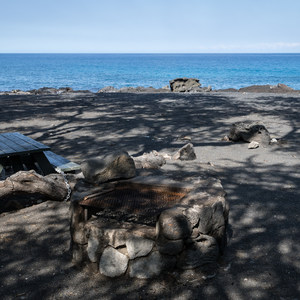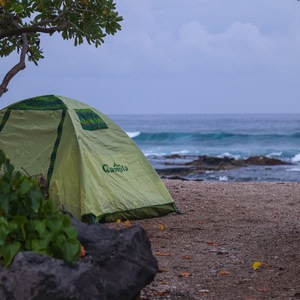In 1790, King Kamehameha I was at a crossroads in his quest to rule all of the Hawaiian islands. Maui, Lāna'i and Moloka'i had come under his rule, and yet he was unable to consolidate power on his home island; his cousin, Keōua Kūahu'ula, opposed Kamehameha's ascendance. Kamehameha searched for counsel and received a prophecy that the islands would be his if he built a temple on Pu'ukoholā (whale hill) and dedicated it to the war god Kūkā'ilimoku.
The stones that constitute this temple come from Pololu Valley, which these days can be accessed by driving another 26 miles on Highway 270 around the northern tip of Kohala, the northernmost volcano on the Big Island. In 1790, however, another strategy and route was necessary: A 20-mile-long human chain of workers moved the rocks hand to hand to the temple site. Construction was finished by 1791, and Kamehameha invited Keōua Kūahu'ula to visit. When his cousin arrived, Kamehameha killed him; less than 20 years later, King Kamehameha became ruler of all the islands.
In addition to the Pu'ukoholā Heiau, visitors will also have the chance to see Mailekini Heiau, which sits below, is older, and is of unknown origin and purpose. Kamehameha actually mounted cannons on this heiau at one point. Slightly farther down the hill lies the beach area known as Pelekane, which was a royal compound and port. And somewhere out in the bay sits a third heiau, Hale o Kapuni Heiau, which is dedicated to the shark gods.
Any visitor here must remember that this site is very much a sacred area for Hawaiians. Do not touch or climb on the rock structures, and leave everything in place here. Respect the kapu, or the taboo areas, of this site. The National Park Service maintains and administers this site as public land, and if you appreciate the opportunity to enjoy this historic site (for free, no less), be sure to support the National Park Service and efforts to keep public lands public.































Comments
Sign In and share them.